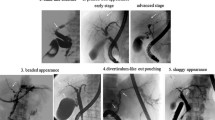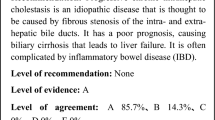Abstract:
Patients with primary sclerosing cholangitis (PSC) in Japan have two peaks in age distribution, one in their twenties and the other in their fifties and sixties. PSC patients in Japan have different characteristics from those in other countries: there is a higher incidence of eosinophilia (27%) and positivity for anti-nuclear antibody (30%), less frequent complication with inflammatory bowel diseases (IBD; 21%), and more frequent complication with chronic pancreatitis (15%). In younger patients in Japan (those aged less than 40 years), the incidence of positivity for anti-nuclear antibody was lower (20% vs 38% P < 0.05), complication with IBD was more frequent (39% vs 9% P < 0.01), complication with chronic pancreatitis was less frequent (4% vs 22% P < 0.01), and damage to both the intra- and extrahepatic bile ducts was more frequent (89% vs 56% P < 0.01) than in older patients (those aged 40 years or more). These findings suggest that younger PSC patients in Japan have characteristics similar to those of patients in other countries, and that in Japan older PSC patients have a different pathogenesis from that of younger patients.
Similar content being viewed by others
Author information
Authors and Affiliations
Additional information
Received for publication on Feb. 16, 1999; accepted on April 5, 1999
About this article
Cite this article
Takikawa, H. Recent status of primary sclerosing cholangitis in Japan. J Hep Bil Pancr Surg 6, 352–355 (1999). https://doi.org/10.1007/s005340050129
Issue Date:
DOI: https://doi.org/10.1007/s005340050129




